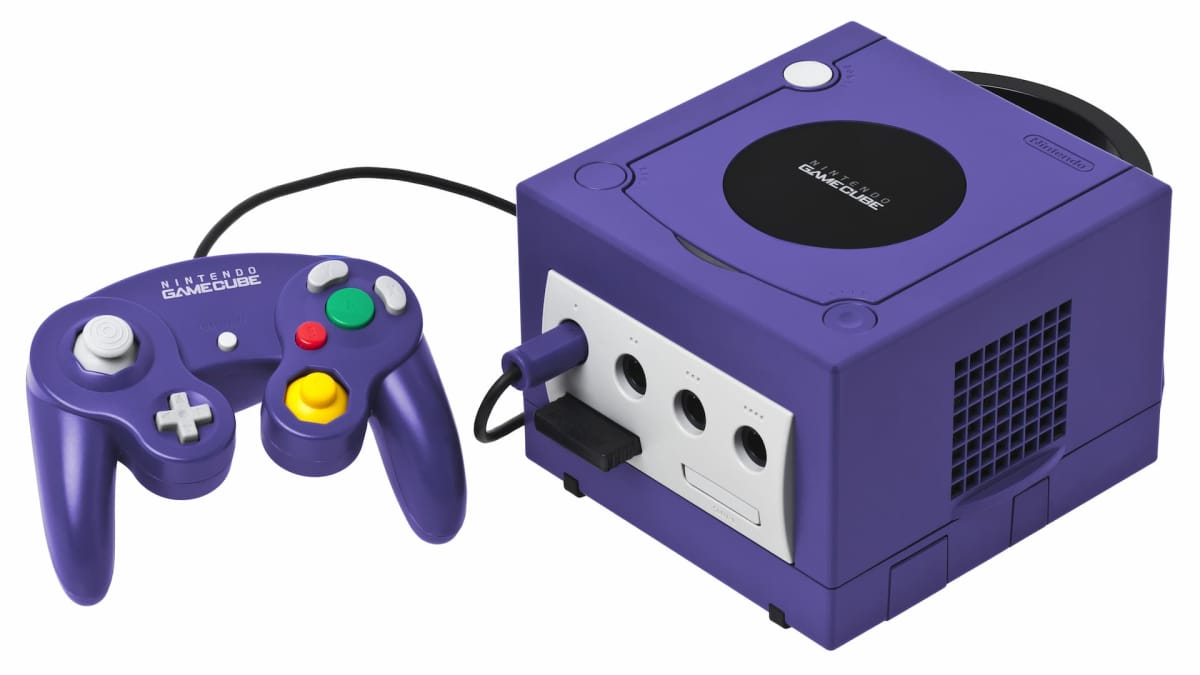Fifteen years ago today, Nintendo launched the GameCube. The successor to the respectable but beleaguered Nintendo 64, it was also less than a resounding success. In the late 90s, when the N64 was beginning to wane, there were talks of “Project Dolphin,” a console that would eventually become the GameCube. Development began with a company called ArtX, which was later purchased by ATI (later purchased by AMD).
Working with ArtX, Nintendo created the Flipper GPU. Working with IBM, they produced a PowerPC-based CPU called Gecko. The final product was eventually announced in 2000. By the time the GameCube had launched, Sega had already pulled the plug on the Dreamcast, but many developers turned their attention to not just the GameCube, but also to Microsoft’s Xbox.
Internally, the GameCube had a more powerful CPU than the original Xbox but a weaker GPU. Nintendo also promoted connectivity between the GameCube and the recently-released Game Boy Advance via a special cable. This was used for various functions, such as using the Tingle Tuner in The Legend of Zelda: The Wind Waker, to every player having their own screen in The Legend of Zelda: Four Swords Adventures. Nintendo also came out with peripherals such as the Game Boy Player, a cable modem, and a Japan-only controller that had a full QWERTY keyboard, intended for use with Phantasy Star Online.

Notably, Nintendo decided on a proprietary mini disc format instead of standard DVDs. This meant that unlike the Playstation 2 and Xbox, it could not play DVD’s, which were a new technology in 2001 and a notable selling point for consoles. Nintendo did later partner with Panasonic to create a Japan-exclusive version of the GameCube called the Q, which was larger, had a metallic silver finish, and carried a heftier price tag.

However, the greatest peripheral for the GameCube is the now mundane Wavebird. Most wireless controllers up until the Wavebird used infrared signals, which depended on line of sight. The Wavebird was the first first-party wireless controller to use radio frequency, which allowed for a better range and wasn’t prone to connection issues.

While it may not have had much success with third party developers, Nintendo did manage to create some of the best games they’ve ever made during this era. Some third parties like Factor 5 also did great things with the console. As with other console retrospectives, here’s a highlight of six great games:
Super Smash Bros Melee

A launch title in the US, Melee was the follow up to the unexpected hit Super Smash Bros. Melee featured more characters, more stages, and far more modes of play than its predecessor. Still considered to be the best game in the series by many die-hards, it’s a common game for tournaments.
It made its debut at EVO 2007, and this year saw its biggest player pool with near 2000 entrants—it was the largest Melee tournament to date. While Super Smash Bros Brawl and Super Smash Bros For Wii U/3DS expanded the roster and added more game modes, Melee remains beloved for its physics and a metagame that is unchanged by updates.
Metroid Prime

Launched alongside Metroid Fusion, this game not only revived Metroid, but also brought it into 3D. Many were skeptical at the time of the new developer Retro Studios helming the project, and even further skeptical of the decision to turn it into a first person game. Metroid Prime was praised for its detailed, immersive level design, soundtrack, and adding the use of different beams and visors to the series.
Nintendo would later port Prime and its sequel, Echoes, to the Wii, remade with Wiimote controls. They were packaged with another title, Corruption, in the Metroid Prime Trilogy, the only game on this list available in the Wii U's eShop.
F-Zero GX

To date, F-Zero GX is the last home console F-Zero that Nintendo has released. When they eventually release another one, it’ll be difficult to top GX. The game runs at a smooth 60FPS with very little sacrifices to graphical details.
Nintendo co-developed GX with Sega, and the game runs on a modified Super Monkey Ball engine. There was also a similar arcade version called F-Zero AX, but it was not a common game.
Eternal Darnkess: Sanity’s Requiem

Eternal Darkness is a horror action game Nintendo developed with Silicon Knights. A woman named Alexandra is investigating her grandfather’s murder, and begins to experience the lives of people in the past.
Notably the game features the “Sanity Meter," which Nintendo went as far as to patent. When the Sanity Meter is lowered, the character becomes delusional, hearing noises, seeing things that aren’t there, and the lighting and camera angles will change. Silicon Knights has since closed up shop, and while Nintendo retains the rights to the game, they have not re-released it, nor have they announced any plans for a sequel.
Fire Emblem: Path of Radiance

Path of Radiance was the first 3D Fire Emblem game, and the first home console entry released outside of Japan. The turn based strategy game follows the hero Ike and a group of mercenaries as they protect and attempt to restore their country’s rightful queen after an invasion by a neighboring country. Along the way, Ike’s father is killed by a general known only as the Black Knight, making the fight more personal for Ike.
The Fire Emblem series is notable for its difficulty and for permanent death—characters that die in battler are generally unusable for the rest of the game. Nintendo released a direct sequel called Fire Emblem: Radiant Dawn in 2007 on the Wii.
Star Wars Rogue Leader: Rogue Squadron II

Rogue Leader was a launch title for the GameCube and a sequel to the N64’s Rogue Squadron. Unlike Rogue Squadron, Rogue Leader primarily followed the adventures of Wedge Antilles and not Luke Skywalker. Denis Lawson, the actor that portrayed Wedge in the films, recorded new dialogue for this game. Despite being a launch title, Factor 5 was able to make extensive use of the GameCube’s hardware, and it was one of the most graphically impressive games ever released for the system.
The GameCube was Nintendo's last traditional console, and the last where Nintendo aimed to compete with performance. In 2006, it was succeeded by the Wii, which was highly anticipated under the code name "Revolution."
While most Wii models had GameCube controller ports, and some games like Fire Emblem: Radiant Dawn and Super Smash Bros Brawl were capable of using GameCube controllers, the Wii marked a new era in Nintendo's history and philosophy. The GameCube leaves us a legacy of fun games, odd mini discs, and firmly establishing wireless controllers as a capable technology.
Do you have any fond memories of the GameCube? Do you think that there are any other games everyone should play? Let us know in the comments.
Have a tip, or want to point out something we missed? Leave a Comment or e-mail us at tips@techraptor.net













